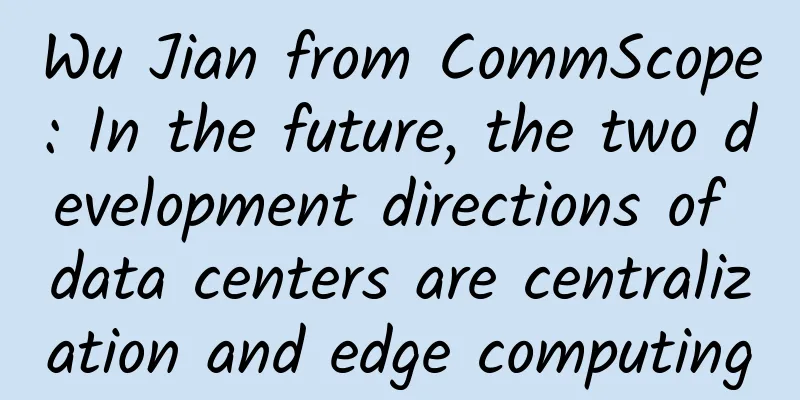What is Far-End Crosstalk and Near-End Crosstalk

|
If you are at all familiar with copper cable testing, you have likely heard of crosstalk – the phenomenon where a signal transmitted on one pair or channel has an undesirable effect on another pair or channel. Crosstalk can interfere with a specific pair of wires or the entire cable, causing bit errors or data failure. For example, have you ever heard someone else talking on the phone? This is caused by interference between adjacent phone lines. But do you understand the difference between the NEXT and FEXT parameters when testing balanced copper network cabling systems? We thought it would be worth taking a closer look.
Proximal Near-end crosstalk, abbreviated as NEXT, is a performance parameter for a single link/channel that measures the signal coupled from one pair of wires to another pair of wires. The pair causing interference is called the "disturbant pair", while the pair affected by the crosstalk is called the "disturbed pair". NEXT is expressed in decibels (dB) and varies with the transmission frequency, with higher frequencies producing more interference. The larger the dB value, the less crosstalk is experienced by the interfered link/channel. For example, a Category 5e cable that can transmit up to 100 MHz may have a NEXT value of 45.8 dB at 20 MHz and a NEXT value of 35.3 dB at 100 MHz, indicating better NEXT performance at lower frequencies. The measurement result is called "near-end" crosstalk because the crosstalk is measured at the source end of the link/channel. Twisted pairs help to cancel out NEXT—different twist ratios on each pair prevent pairs from picking up signals from adjacent pairs. So it’s important to keep the pairs twisted as close to the terminals as possible. The twist ratio for each category is also optimized for crosstalk performance and improved isolation. So for a Category 6 cable that supports 250 MHz, the NEXT value at 100 MHz is 44.3 dB, while Category 5e has a NEXT value of 35.3 dB at the same frequency. Power Sum Near-End Crosstalk, abbreviated as PSNEXT, is a simple sum of the NEXT measurements of all adjacent pairs. NEXT represents the crosstalk caused by three of the four pairs in the cable on the other pairs. PSNEXT is the sum of the crosstalk values of all three adjacent pairs, indicating how severe the impact is on one pair when all four pairs in the network are transmitting signals (such as 1000BASE-T). Last but not least, the NEXT test includes PSACRN – the Near-End Power and Attenuation Crosstalk Ratio (formerly PSACR, but renamed to distinguish it from PSACRF, described below). Calculated using PSNEXT and the insertion loss value (see the “Cable Testing 101 Q&A” series on insertion loss), it tells you the difference between the attenuation of each pair and the combined crosstalk received from the other three pairs. The goal is to ensure that the received signal is strong enough compared to the noise in the cable. The higher the PSACRN value, the better the performance. remote Far-end crosstalk, abbreviated as FEXT, is also measured within a channel. Far-end crosstalk has many similarities to NEXT, but is measured at the far end of the channel. However, FEXT alone does not account for the attenuation of the signal over a certain distance. To provide a more informative result, attenuation (insertion loss) is removed from the FEXT result and is called equivalent far-end crosstalk. In recent years, TIA renamed this parameter as far-end attenuation-to-crosstalk ratio, or ACRF for short. As with NEXT, the ACRF measurements for each of the three disturbing pairs are summed to produce the Power Sum ACRF (PSACRF). The PSACRF parameter used to be referred to as Power Sum ELFEXT (PSELFEXT) before TIA changed the parameter name. |
<<: Machine learning will be an indispensable future for the development of the Internet of Things
>>: Data Center Strategic Evolution
Recommend
Three ways 5G will change manufacturing
According to RT Insights, the Manufacturing Insti...
[Hotspot] ZTE was fined $1 billion but escaped death. Review of the whole ZTE incident
Last night Beijing time, Xinhua News Agency and f...
A simple understanding of the TCP/IP model, starting with the Hello World example
The TCP/IP model is the foundation of the Interne...
CloudCone Flash Sale starts at $15.5/year - 1GB/55GB/3TB@1Gbps/Los Angeles Data Center
CloudCone launched a flash sale in April, offerin...
Look up to the sky with 5G, keep your feet on the ground with 4G
[[348928]] October 28 news: Although 5G has alrea...
How small businesses will benefit from 5G
Before enough new devices enter the mainstream ma...
[11.11] Megalayer: 60% off Hong Kong/US high-defense servers, 60% off Hong Kong Alibaba/Huawei cloud hybrid servers, US servers 199 yuan/month
Yesterday we shared Megalayer's flash sale du...
Taiyixingchen: Breaking through bottlenecks allows security companies to focus on network security
[51CTO.com original article] Recently, Beijing Ta...
When will the price of NB-IoT modules drop below 20 yuan?
The cost of NB-IoT, especially the module cost, h...
CheapWindowsVPS 50% off, 1Gbps unlimited traffic starting from $4.5 per month, 7 data centers to choose from
CheapWindowsVPS is an established foreign hosting...
What is RedCap technology in 5G R17?
A few days ago, 3GPP announced the freezing of th...
Modernizing Configuration Management to Address Network Complexity
The expansion of network infrastructure to multip...
How to accelerate enterprise innovation and transformation with the help of Wi-Fi 6?
Wi-Fi 6's expansion to 6GHz is further attrib...
5G is here: Will 4G soon be relegated to the sidelines?
Will 4G, which once brought prosperity to the mob...
HostSlick: €37/year KVM-2 cores/2GB/240G SSD/15TB@10Gbps/Netherlands VPS
HostSlick has launched a Christmas/New Year's...









